<Back to Index>
- Automotive Designer and Manufacturer Ettore Arco Isidoro Bugatti, 1881
- Automotive Designer and Engineer Jean (Gianoberto Maria Carlo) Bugatti, 1909
PAGE SPONSOR
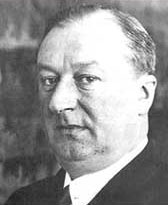
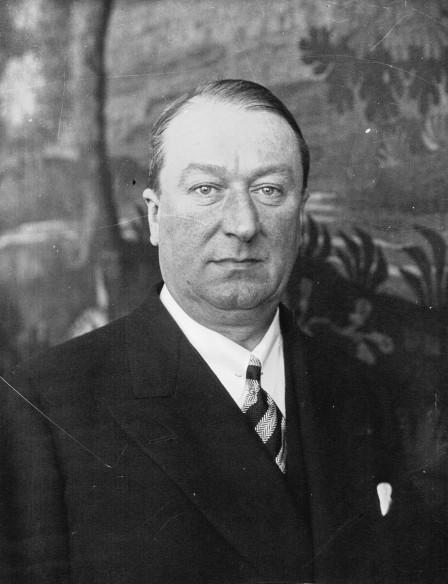
Ettore Arco Isidoro Bugatti (15 September 1881, Milan - 21 August 1947, Paris) was an Italian born and French naturalized citizen automobile designer and manufacturer.
Ettore was from a notably artistic family with its origin in Milan. He was the elder son of Carlo Bugatti (1856 - 1940), an important Art Nouveau furniture and jewelry designer, and his wife Teresa Lorioli. His younger brother was a renowned animal sculptor, Rembrandt Bugatti (1884 - 1916). His aunt, Luigia Bugatti, was the wife of the painter Giovanni Segantini. His paternal grandfather, Giovanni Luigi Bugatti, was an architect and sculptor.
Before founding his eponymous automobile manufacturing company Automobiles E. Bugatti, Ettore Bugatti designed a number of engines and vehicles for others. Prinetti & Stucchi produced his 1898 Type 1. From 1902 through 1904, Dietrich built his Type 3/4 and Type 5/6/7 under the Dietrich - Bugatti marque. In 1907, Bugatti became an employee of Deutz Gasmotoren Fabrik, where he designed the Type 8/9.
Bugatti developed the Type 2 in 1900 and 1901, respectively. He developed the Type 5 in 1903. While employed at Deutz, Bugatti built the Type 10 in the basement of his home. In 1913, Bugatti designed a small car for Peugeot, the Type 19 Bébé.
Although born in Italy, Bugatti established his eponymous automobile company, Automobiles E. Bugatti, in the town of Molsheim in the Alsace region of France. Automobiles E. Bugatti was known for the advanced engineering of its premium road cars and its success in early Grand Prix motor racing. A Bugatti was driven to victory in the first Monaco Grand Prix.
While displaced from his home in Alsace by World War I, Bugatti designed airplane engines, notably the somewhat baroque 16-cylinder U-16 which was never built in any large number and was only installed in a very few aircraft. Between the wars Ettore Bugatti designed a successful motorized railcar dubbed the Autorail Bugatti, and an airplane, the Model 100, which never flew.
Ettore Bugatti's son, Jean Bugatti, was killed on 11 August 1939 at the age of 30 while testing a Bugatti Type 57 tank bodied race car near the Molsheim factory. After that, the company's fortunes began to decline. World War II ruined the factory in Molsheim, and the company lost control of the property. During the war, Bugatti planned a new factory at Levallois in Paris and designed a series of new cars.
Bugatti's concept of customer relations was somewhat eccentric. To a Bugatti owner who complained that his car was difficult to start on cold mornings, he is said to have retorted, "Sir! If you can afford a Type 35, you can surely afford a heated garage!"
Ettore Bugatti was buried in the Bugatti family plot at the municipal cemetery in Dorlisheim near Molsheim in the Bas-Rhin département of the Alsace region of France.
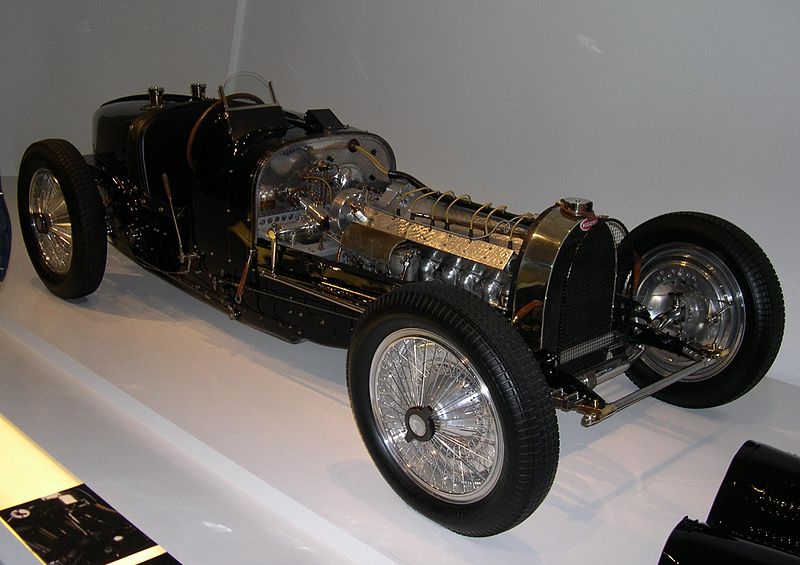
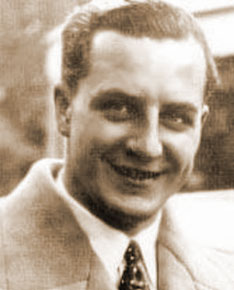
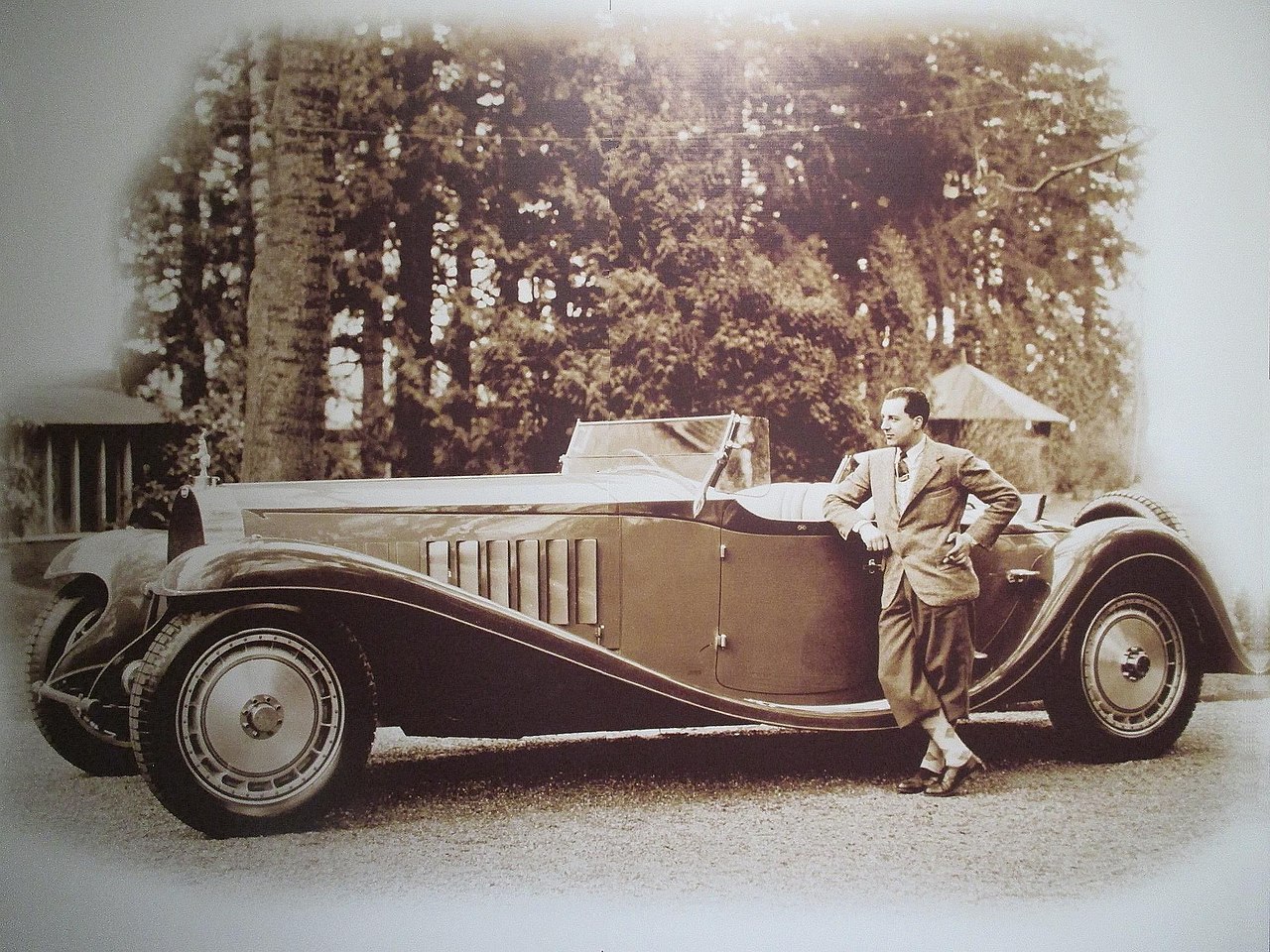
Jean Bugatti (15 January 1909 - 11 August 1939) was a French/Italian automotive designer and test engineer.
Born Gianoberto Maria Carlo Bugatti in Cologne, Germany, he was the eldest son of Ettore Bugatti. Soon after his birth the family moved to the village of Dorlisheim near Molsheim in Alsace where his father built the new Bugatti automobile manufacturing plant. Born into a family of creative people, from boyhood he was interested in his father's business. His grandfather Carlo Bugatti had lived in France for several years when he relocated from his native Milan to live in Paris. His father's factory had clients in France and had done work for the Peugeot company. As such, the Bugatti family were multilingual and in France, Gianoberto became known as Jean.
During World War I, the family lived in Milan, Italy. After the retaking of Alsace by France at the end of the war the company became subject to French jurisdiction. By the late 1920s, young Jean Bugatti was an integral part of the company and had already demonstrated his vehicle design abilities. In 1932, at the age of twenty - three, he did most of the design for the company's Type 41 Royale. His body designs complemented his father's engineering skill, making Bugatti one of the greatest names in automobile manufacturing. Additionally, Jean Bugatti designed three bodies for the Type 57, the Ventoux, Stelvio and Atalante models. Regarded as the finest of all touring Bugatti models, the supercharged vehicle was displayed first at the 1936 Paris Salon. Jean Bugatti also showed his engineering skills by working on new independent suspension systems to replace solid front axles and twin-cam engine applications.
He frequently tested the company's prototypes. On 11 August 1939, while testing the Type 57 tank bodied racer which had just won a Le Mans race, not far from the factory on the road near the village of Duppigheim, 30 year old Jean Bugatti was killed when he lost control of his vehicle and crashed into a tree while trying to avoid a drunken bicyclist, who had gotten onto the track through a hole in a tree fence. He is interred in the Bugatti family plot at the municipal cemetery in Dorlisheim. There is a monument to him at the site of his accident.